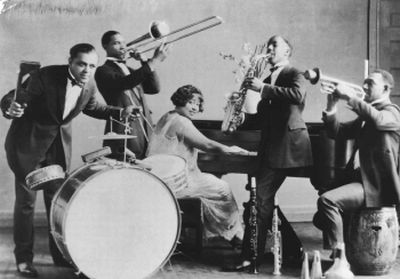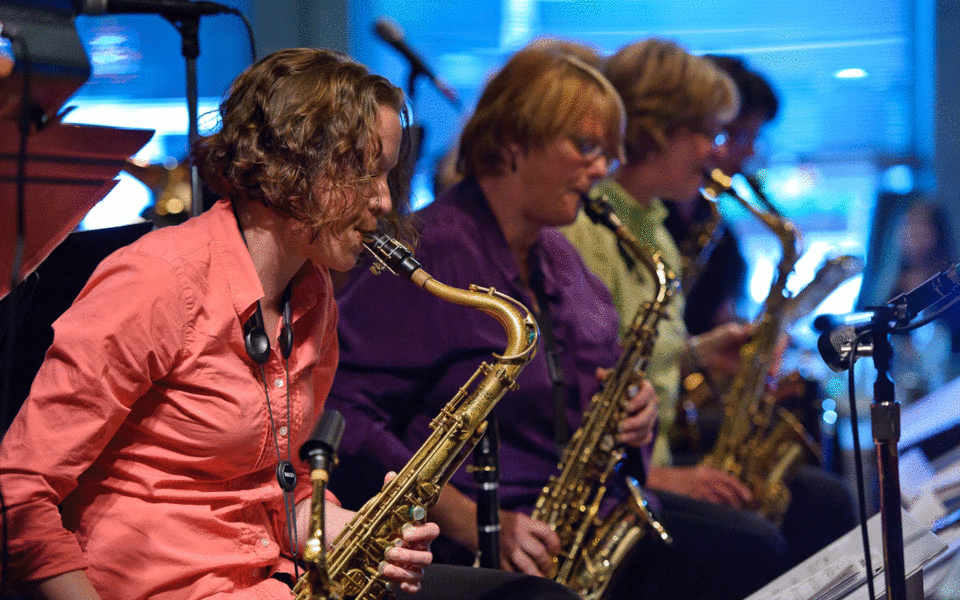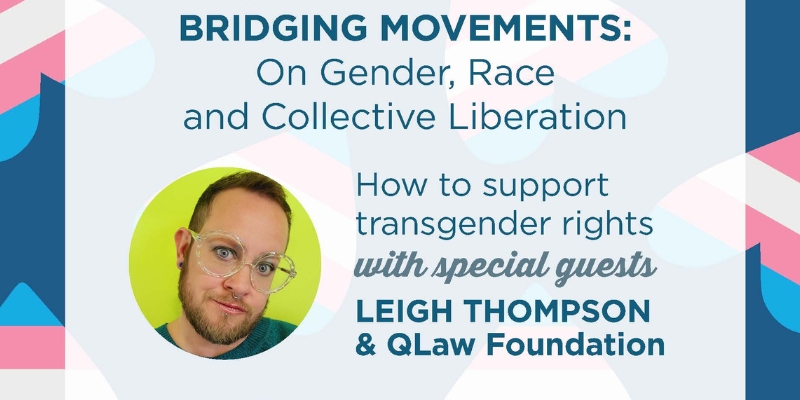There was much concern in the February 25, 1922 edition of the Town Crier. The writers were worried about this thing called jazz music. They questioned, “Will the willingness of some musicians yield abjectly to the existing ‘jazz-craze’ even though momentarily financially remunerative, not eventually prove socially demeaning?” They thought most certainly it would prove socially demeaning.
“Musically speaking,” the story continued, “these are the impressions: The fiddle whines and wails, reminding one of Mr. Thomas Cat on a moonlight night, inviting bootjack bouquets from back windows.” The saxophone was no better. It “bawls periodically like a lonesome cow.”
Don’t get the writer started on trombones. It “heaves up spasmodically like the fellow who has imbibed too freely of boot-legging moisture.” The cornet is a “cackling hen,” and the poor piano is “pulverized with arpeggios and chromatics until you can think of nothing else than a clumsy waiter with a tin tray full of china and cutlery taking a ‘header’ down a flight of concrete steps.”
So much for musical effect. The writer doesn’t care much for the music…nor the musicians. “A bunch of intoxicated clowns,” the Crier cries, “indulging in all sorts of physical gyrations.”
Gadzooks! What a mess Seattle’s music scene was in 1922. The writer all but knew the jazz craze would die down but the musicians would forever be marked as clowns. “In the interest of conserving the dignity of the musical profession I would ask contractors to minimize what I believe will be a detriment to all of us.”
Jazz did not die down—not in Seattle, not anywhere. It was just heating up. Just as the writers were beginning to lament Seattle’s jazz scene, four women were bringing jazz further into the fore. From 1918 to 1924, pianist Gertrude Harvey Wright was one of four women in Seattle’s first black musicians’ union, the American Federation of Musicians’ Local 458.
Gertrude Harvey Wright, Virginia Hughes, Edythe Turnham, and a Mrs. Austin, all worked with their male counterparts at union headquarters and on the bandstand. Morphing to the AFM 493, the union, along with Local 76, co-existed for the next forty years, becoming the pillar of Seattle’s jazz scene.
The 493 Union represented such jazz greats as Ray Charles, Phil Moore, and Quincy Jones.

Edythe Turnham and Band
Some of those early women musicians who made their mark include Ann Coy who played piano and headed The Black Aces with her husband. The aforementioned Edythe Turnham headed her own big band, The Knights of Syncopation. Evelyn Bundy was a member of the Garfield Ramblers and, later, led the Garfield High School band.

Seattle Women’s Jazz Orchestra. Photo by Jim Levitt.
Today, there are plenty of local jazz women. In fact, there are entire organizations. Seattle Women in Jazz is the first organization of its kind locally to specifically highlight some of Seattle’s best jazz artists and bands, led by and/or comprised of women. One of those bands is the Seattle Women’s Jazz Orchestra. Seattle JazzED has its own Girls Ellington Project Ensemble for 9th to 12-graders.
Jazz maniacs, all. The echoes of Gertrude Harvey Wright’s piano can still be heard. The bawling saxophone of Turnham’s big band is still bawling.
We’re all the better for it.

